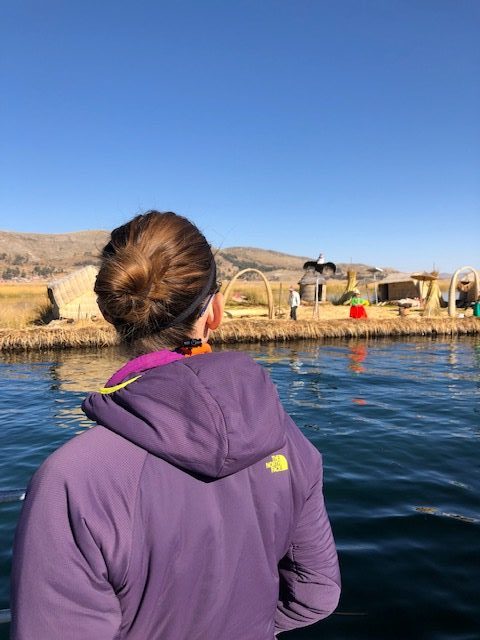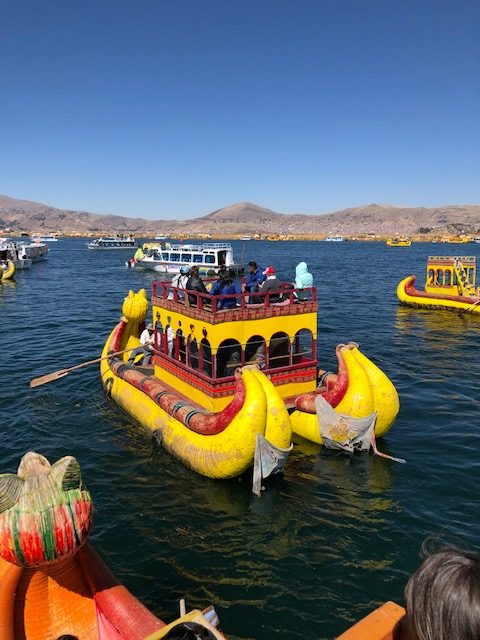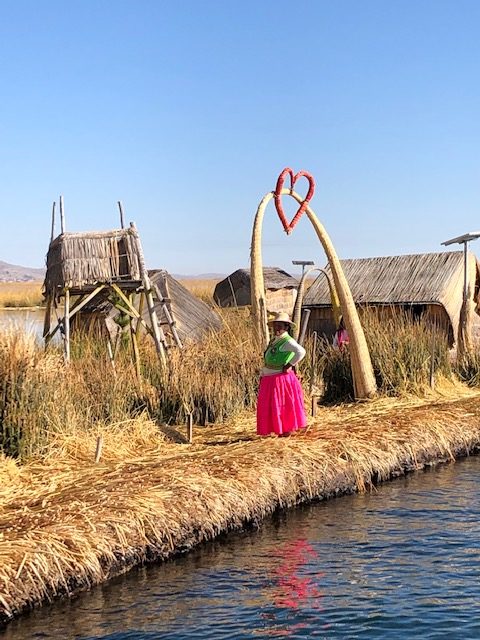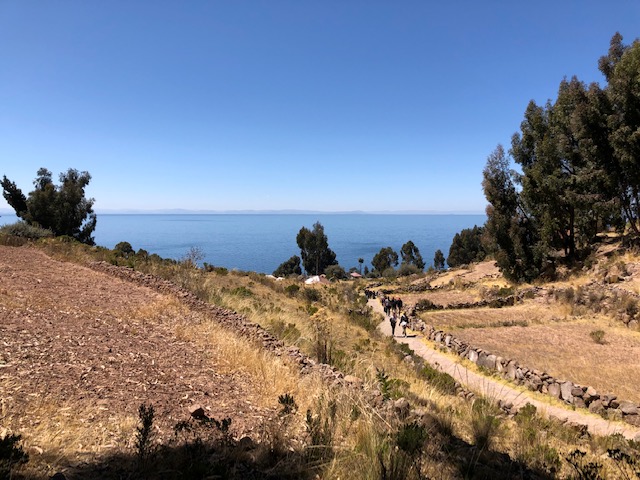When Lake Titicaca appeared on the horizon I was impressed by its size: 8,372 square meters distributed between Peru and Bolivia which make it among the largest in the world, as well as the highest being at 3,800 meters above sea level.
Titicaca is the cradle of the Inca civilization, since from the waters off the Isla del Sol were born Manco Sun God Cápac and Mama Ocllo, founders of the most famous civilization of South America.
Coming from Arequipa to Puno, we took an afternoon to get used to the altitude and discover the small but colorful and neat town on the shores of the lake.
There are no particular points of interest in the city but it is pleasant to walk through its streets and simply savor the atmosphere.
Islands of Titicaca Lake
The real experience to do on Lake Titicaca is to start discovering its islands and in particular the populations that live there, such as the Uros and their floating islands.

These little islets, 98 in all, are made of totora reeds, stretched one layer over the other which must be kept constantly with a great job.
The little houses built above the floating islands of Lake Titicaca are made of this type of cane, which can also be eaten and used in many other ways. In fact, with the totora the typical boats are built on which, for 10 soles you can take a tour during a tour to the Uros islands. These small islets are anchored to the seabed and if necessary can also be moved and reunited with each other, as at weddings.

The other two main islands on the Peruvian side of Lake Titicaca are Amantanì and Taquile. By entrusting you with organized tours, you can visit both islands plus Uros in one day, but I recommend choosing only one so that you have enough time to dedicate to the visit.
Next stops in my Peru trip is coming: I’ll talk about excursions you can do nearby Cuzco… stay tuned!

